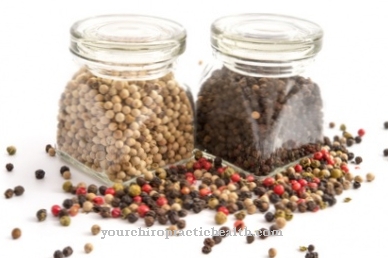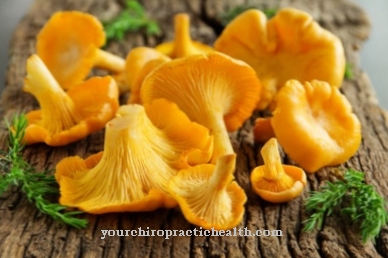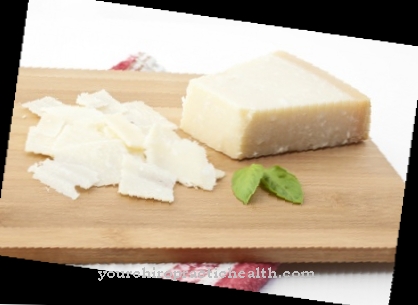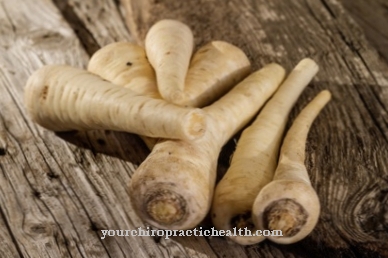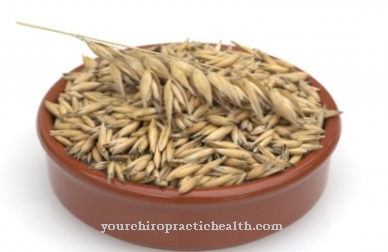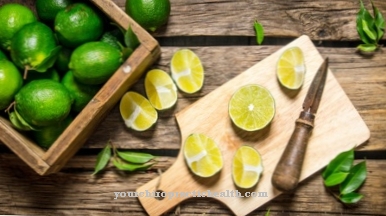Kale is always referred to as typically German, although the ancient Romans knew this, too Brown cabbage called vegetables. Even in ancient times, people knew that Kale has unbeatable health and culinary specialties to offer. Kale does not form in heads like other types of cabbage and is therefore most similar to the wild form of all types of cabbage.
What you should know about kale

The kale originally comes from the eastern Mediterranean. The Greeks described it 2000 years ago as a curly-leaved cabbage, which they called "Sabellinian cabbage" and which was considered a delicacy in Roman cuisine. In Italy it enjoys a good reputation as a close relative of the cruciferous plant under the name "Cavolo Nero".
Today its growing areas are in North America as well as East and West Africa and in Central and Western Europe. In Germany, kale is mainly grown in northern Germany and is particularly popular there. The first official kale feast is recorded in the chronicles in 1545. In Germany the names are Kale, High cabbage, Winter cabbage and Kale known for the kale. In the areas around Bremen and Hanover it is also called brown cabbage because a variety is grown there, the leaves of which have a purple-brownish color. With the East Frisians it has the beautiful name "Frisian palm" because it has such a leaping leaf structure.
Not only does kale have different names, there are also many different varieties with differently shaped and colored leaves. There are also half-height, high and low kale varieties. The low varieties develop faster and are therefore suitable for areas where there is a lot of snow, because the high varieties can withstand the snow load.
The kale can be harvested from October onwards; the outer leaves of several plants are cut off or broken off so that enough substance remains. As long as it is not too frosty, the cabbage plants will continue to grow, because they are frost-hardy and can be harvested all winter. In spring, new shoots can still be harvested as early vegetables. Since kale is two years old, it sprouts yellow flowers in the second year, from which pods with seeds form.
So that it can develop its aromatic taste well, it needs a sufficient maturation time. The best time to harvest kale is after the first frost, then its metabolic processes have slowed down and the sugar content in its leaves has risen and its taste releases all aromas. Industrial producers cultivate varieties that produce more sugar from the start and can be harvested earlier, but this has no disadvantages in terms of nutritional values and content.
The kale harvest season extends from late September to April. In terms of taste, the kale has attractive contrasts, because it is typically a mixture of spicy, tart and mildly sweet taste.
Importance to health
Kale is known as an unbeatably healthy vegetable - even canned or frozen, it does not lose any of its health-promoting ingredients.
When cooked, kale doesn't look very inviting, but with its good vital substances and fiber it makes you fit, cleanses the intestines and, with its high vitamin A content, prevents age-related diseases such as cataracts. Some may wrinkle their noses at its pungent smell, which it owes to its sulfur compounds. These serve the well-being, because they reduce the risk of cancer.
With its impressive combination of vitamins, kale offers more cell protection and defense against infection than other vegetables. Its vital substances supply the body with essential minerals and essential amino acids.
Its fiber binds parts of the bile acid and keeps the harmful cholesterol out of the fats and thus transports it out of the body with the digestion. When kale is eaten, it not only lowers blood lipids, it also has a positive effect on the cardiovascular system. The kale scores with secondary plant substances and antioxidants, because the flavonoids it contains are valued at at least 45 and have both antioxidant and anti-inflammatory effects.
Ingredients & nutritional values
| Nutritional information | Amount per 100 gram |
| Calories 49 | Fat content 0.9 g |
| cholesterol 0 mg | sodium 38 mg |
| potassium 491 mg | carbohydrates 9 g |
| protein 4.3 g | calcium 150 mg |
Kale is extremely rich in valuable vital substances and is considered the local vegetable with the highest mineral and vitamin content.
The nutritional structure of this vegetable surpasses many others in terms of vitamin C, vitamin A, which is in the form of carotenoids such as lutein, vitamin K, as well as calcium, folic acid, potassium, magnesium, iron and omega 3 fatty acids. Also with regard to its antioxidant phytochemicals and fiber, as well as its high chlorophyll content, this vegetable can be a promoter of health.
Intolerances & allergies
Vitamin K plays an important role in blood clotting and kale contains a lot of it. It is therefore important that people who take blood-thinning medication do not consume too much, as vitamin K can have an inhibitory effect on the medication. Even people prone to gout shouldn't eat too much kale as it contains a lot of purines.
Shopping & kitchen tips
When shopping, you should make sure that its curled leaves glow in a lush green and look nice and crisp. Fresh kale with dry and withered leaf tips should not be bought.
In order for the kale to retain all of its valuable vitamins, especially vitamin C, it should not be stored in the refrigerator for longer than 4-5 days. It can also be frozen very well, but it should be pre-cooked or blanched so that it is not so voluminous. Kale is frost hardy, so if you grow it yourself you should leave it on the bed until you can eat it, because freshly harvested it simply contains most of the vitamins.
The preparation takes a little work, withered leaves have to be removed, the remaining leaves have to be washed thoroughly several times, because more sand and earth is hidden in the crinkled leaves than with smooth vegetables. Real fans don't shy away from the trouble of using fresh kale. After removing the hard stems, the leaves are cut into narrow strips.
Preparation tips
In the kitchen today, kale is very versatile. The robust vegetable has a real cult status in the whole of northern Germany in winter. The smoked Grützwurst, the “Pinkel”, should not be missing when it is being prepared in one area. In another kale stronghold, it is best cooked with smoked pork, cabbage sausage and potatoes.
Another north German area prefers Bregenwurst cooked in kale. These traditional kale dishes are not exactly healthy food for the body - but they can also be tasted very differently than with plenty of lard and fat sausages. The valuable winter vegetables also taste great when cooked in a wok accompanied by Asian ingredients or as a clear kale soup with tasty herbs. Its raw leaves can be made into a nutrient-rich smoothie with sweet fruit.
Very finely chopped leaves as a salad with a tasty dressing made from olive oil and herbs is also recommended. The more gently it is prepared, the greater the benefit of its ingredients. Gently steamed, seasoned with soy sauce, olive oil, onions and garlic and served on rice, the body will have a concentrated immune system.

